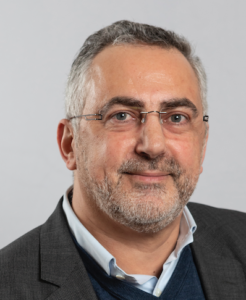Speaker
-
Mohamed JaberLaboratoire de Neurosciences Expérimentales et Cliniques-LNEC Inserm U1084, Université de Poitiers, France
Genetic and environmental animal models of autism reproduce the spectrum of the disease, by Mohamed JABER
Genetic and environmental animal models of autism reproduce the spectrum of the disease
Summary
Genetic and environmental factors increase autism spectrum disorder (ASD) incidence and this has led to the generation of corresponding animal models, with some showing strong construct and face validity.
In this line, we have recently published a series of several studies on ASD environmental and genetic animal models. We focused on motor and gait disorders which are currently not included in the diagnosis criteria, but which may provide new insights to ASD pathophysiology potentially leading to innovative therapies for a disease that currently has none.
In all these models, we reported behavioral, cellular and molecular alterations related to the cerebellum. Motor and gait deficits were observed to various degrees in animal models and when strongly present they were correlated to the severity of social deficits as well as to the number of cerebellar Purkinje cells. Additionally, we also reported that, like in humans, males are more severely affected than females in these ASD models. These findings, along with an increasing body of literature, open new hopes in the ASD field pointing to brain regions, such the cerebellum, that are at the crossroads between cognitive, social and motor deficits. Targeting these brain regions and their underlying pathways and synaptic connections may prove of significant benefits.
Short Biography
 Mohamed JABER obtained my thesis from the University of Bordeaux (1993) working the expression of neuroactive molecules in the brain with a focus on dopamine neurotransmission. During his PhD, he also worked at the Karolinska Institute-Sweden where he participated to the cloning and characterization of a novel neurotrophic factor receptor (TrkC). He underwent my 3 years post-doc (1993-1996) at Duke University-USA (Marc G. Caron and Robert J. Lefkowitz, Nobel prize in 2012) during which he participated to the characterization of transgenic mice lacking the DAT or the beta-adrenergic receptor kinase-1 gene. He was recruited as a CNRS researcher (1996) at Bordeaux before becoming a Professor at the University of Poitiers (2002). From 2006-2010 he was the leader of a CNRS research team working on the physiopathology of disorders associated with the malfunctioning of the dopaminergic system. Throughout his career he has published more than 100 papers on the topic dopamine neurotransmission in journals such as Nature, Science, Nature Neuroscience, PNAS and Neuron. His H factor is 34, several of his papers were commented in faculty 1000 Medicine and faculty 1000 Biology.
Mohamed JABER obtained my thesis from the University of Bordeaux (1993) working the expression of neuroactive molecules in the brain with a focus on dopamine neurotransmission. During his PhD, he also worked at the Karolinska Institute-Sweden where he participated to the cloning and characterization of a novel neurotrophic factor receptor (TrkC). He underwent my 3 years post-doc (1993-1996) at Duke University-USA (Marc G. Caron and Robert J. Lefkowitz, Nobel prize in 2012) during which he participated to the characterization of transgenic mice lacking the DAT or the beta-adrenergic receptor kinase-1 gene. He was recruited as a CNRS researcher (1996) at Bordeaux before becoming a Professor at the University of Poitiers (2002). From 2006-2010 he was the leader of a CNRS research team working on the physiopathology of disorders associated with the malfunctioning of the dopaminergic system. Throughout his career he has published more than 100 papers on the topic dopamine neurotransmission in journals such as Nature, Science, Nature Neuroscience, PNAS and Neuron. His H factor is 34, several of his papers were commented in faculty 1000 Medicine and faculty 1000 Biology.
He is currently the founder and the head of an INSERM Neuroscience Unit composed of 3 research teams : “Laboratoire de Neurosciences Expérimentales et Cliniques” (LNEC) (Experimental and Clinical Neurosciences Laboratory).
HE was a member of the national committee of the CNRS, a member of the Neurosciences INSERM committee, was a member of the French Neurosciences Society board and member of the scientific board of Fondation de France then Fondation Recherche Médicale. At the local level, he is the Inserm regional scientific correspondant.
Team’s web site
Facebook
